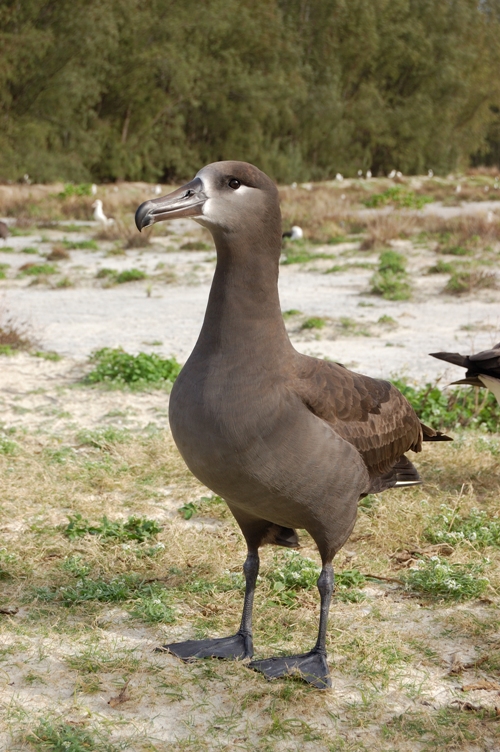Facts About Black-footed albatross
The black-footed albatross is a captivating seabird from the albatross family, Diomedeidae. Predominantly found in the North Pacific, these birds primarily inhabit the Northwestern Hawaiian Islands. Notably, they are among the few albatross species that nest in the Northern Hemisphere, specifically on remote tropical islands.
These birds are easily identifiable by their dark plumage, though some adults exhibit white markings. Classified under the order Procellariiformes, they share this grouping with other seabirds such as shearwaters and petrels.
One of the distinctive features of the black-footed albatross is its nasal passages, which are connected to the upper bill. Additionally, their bills are uniquely partitioned with horny plates. They produce a stomach oil that serves multiple purposes, and they possess a salt gland that helps manage their salt intake. The species name "nigripes" refers to their black feet.
In terms of size, these albatrosses are relatively small compared to others in their family. They have a wingspan ranging from 190 to 220 cm and weigh between 2.6 to 4.3 kg.
The black-footed albatross primarily breeds in the Northwestern Hawaiian Islands, with smaller colonies present on islands in Japan and Mexico. They roam across the North Pacific, frequently favoring the northeastern Pacific Ocean. Known for their vocalizations, these birds display unique behaviors related to breeding, nesting, and feeding. They form lifelong pair bonds and perform a distinctive courtship dance that includes nest-building.
Conservation is crucial for the black-footed albatross, as they are currently considered near threatened. They face hazards from longline fishing, oil spills, and plastic ingestion. To counter these threats, various conservation measures are in place to protect their nesting sites and reduce bycatch. Current estimates suggest there are about 129,000 adult black-footed albatrosses within a breeding range of 28 km². While they face significant challenges, ongoing conservation efforts aim to secure a brighter future for these extraordinary birds.

 Mexico
Mexico